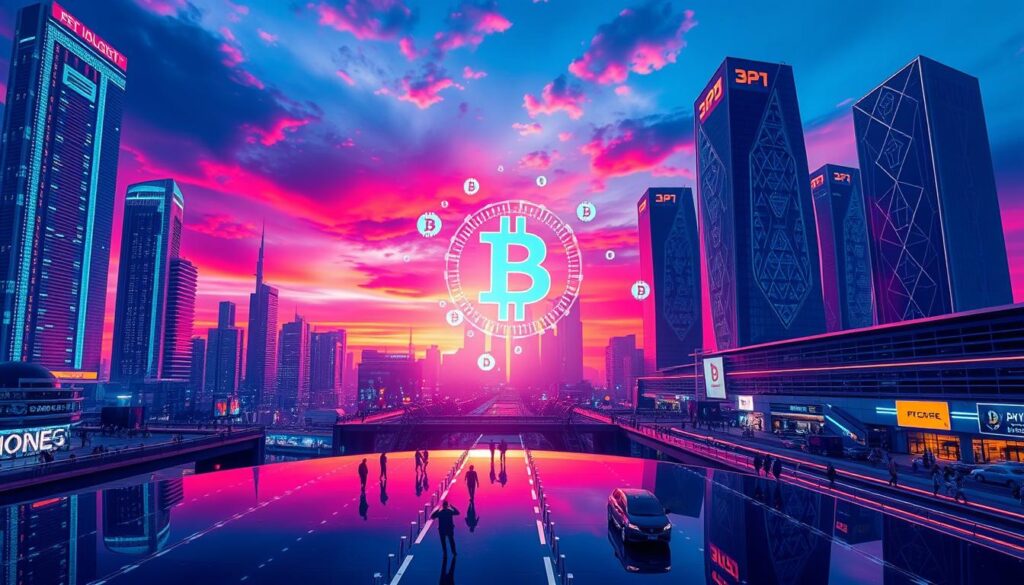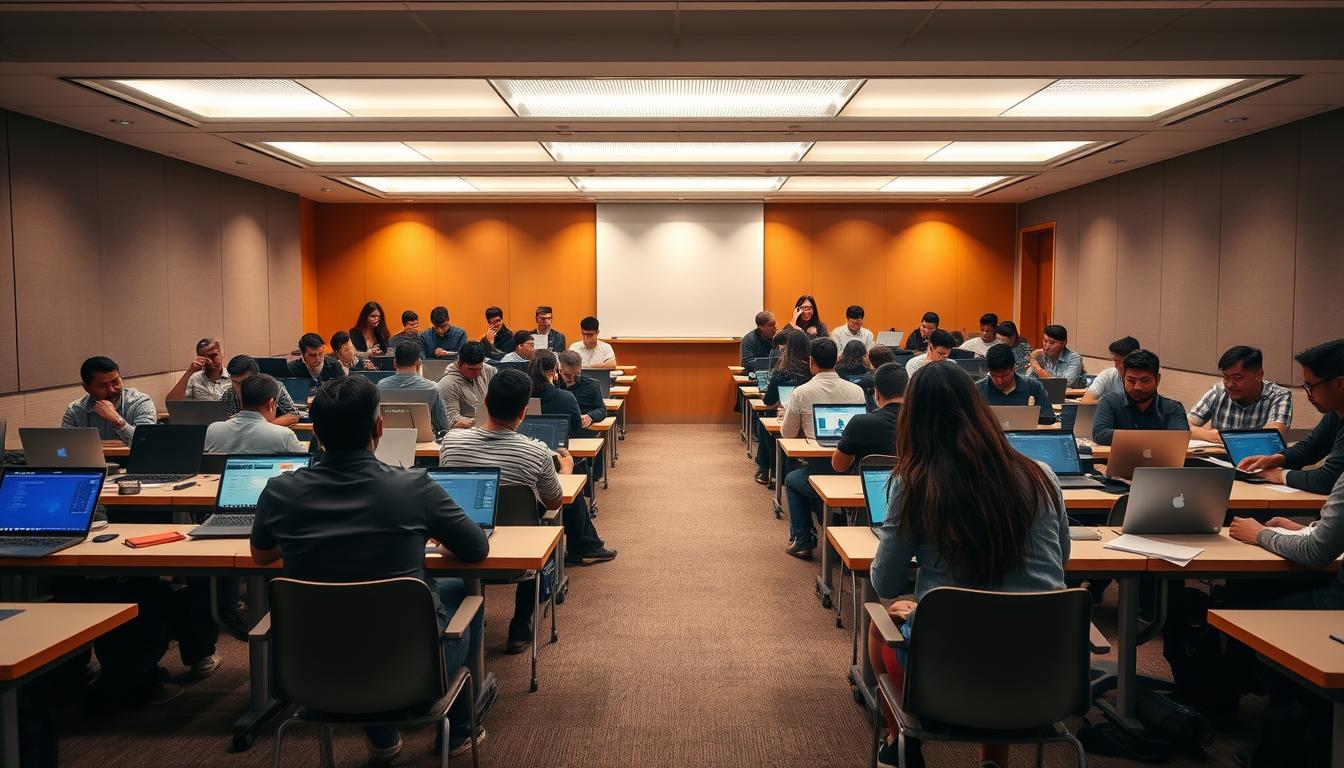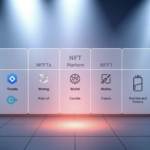Now Reading: Discover Render token RNDR GPU rendering blockchain platform
- 01
Discover Render token RNDR GPU rendering blockchain platform
Discover Render token RNDR GPU rendering blockchain platform
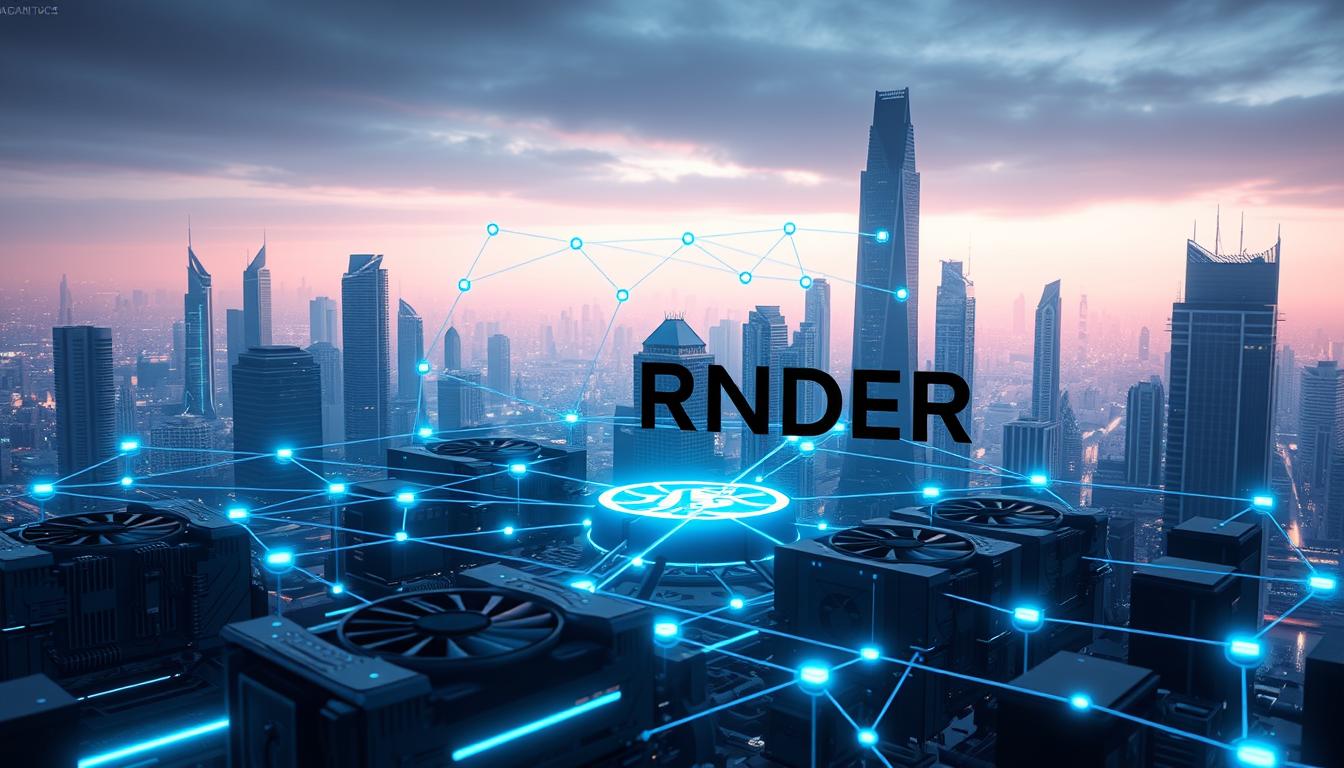
Welcome to the Ultimate Guide for the render network that links creators with idle compute. This network pairs high-demand jobs with distributed gpu owners using RNDR for clear, on-chain payment flows.
Decentralized compute cuts costs and widens access compared with big cloud vendors. Proof-of-render verifies work before funds move, and creators often submit ORBX jobs via OctaneRender with OctaneBench cost estimates.
The system offers predictable pricing, escrowed payouts, and real-time previews. A vetted ecosystem of node operators helps ensure reliable outputs for AI training, high-fidelity 3D, and VFX workloads.
What you will learn: how supply and demand meet, how jobs are priced in USD but settled in RNDR, and how token releases follow validation. Expect practical insight for U.S. users about scaling, costs, and secure payouts.
Key Takeaways
- The decentralized network matches creators with distributed compute resources.
- Proof-of-render and escrowed settlements protect both creators and node owners.
- Jobs are priced in USD and settled in RNDR to reduce volatility exposure.
- Integrations like OctaneRender streamline ORBX submissions and cost estimates.
- The ecosystem improves access, lowers costs, and supports elastic scaling.
Why decentralized GPU rendering matters right now
Today’s creative and AI workloads need far more compute than most centralized services can supply. Demand for fast, high-volume computing power has skyrocketed across AI training, cinematic VFX, AR/VR, and metaverse scenes, creating a persistent supply gap.
Centralized providers often charge high fees, enforce rigid pricing, and create long queues for premium hardware. That hurts small studios and indie creators who need burst capacity without long contracts.
Decentralized gpu rendering spreads jobs across many independent gpus and operators. This market-based network improves elasticity, lowers costs, and removes single-provider bottlenecks.
The system lets qualified providers allocate computing power where it’s needed, reducing regional shortages and cut times. Permissioned nodes still enforce quality, uptime, and compliance, so delivery scales reliably.
- Shorter iteration cycles and fewer delays for creative teams.
- Granular pricing tied to actual usage, helping budgets stretch further.
- Ability to tap idle hardware globally to meet spikes in demand.
In short: a distributed network removes single points of failure, eases supply constraints, and optimizes both performance and costs for modern production pipelines.
What is Render Network? The decentralized marketplace for GPU power
Think of the network as a shared marketplace where creators tap spare computing power on demand. It matches jobs to available systems so teams avoid big capital buys or long cloud contracts. The model supports elastic access and predictable costs.

Creators: On‑demand access to high-performance GPU rendering
Creators upload scenes, pick settings, and watch real-time previews. They retrieve verified assets only after successful validation and pay after completion.
Node operators: Monetize idle GPUs by processing rendering tasks
Owners accept tasks on idle rigs and earn rndr tokens once proof-of-render confirms delivery. The approach helps gpu owners turn unused time into revenue.
RNDR token: On-chain payments, transparency, and fast settlement
The currency serves as a coordination layer: escrowed payments, transparent billing, and rapid settlement across the ecosystem. Tokens tie payouts to verified work and keep records immutable.
- Access: AI researchers, 3D artists, and developers gain burst computing power without vendor lock-in.
- Model: Demand-driven matching scales resources to job size.
- Simplicity: Crypto is abstracted via credits for users who prefer it.
How the render job pipeline works from upload to verified output
A submitted job triggers cost estimation, escrow, execution, and frame‑level validation in sequence.
ORBX submissions
Creators export ORBX files from OctaneRender so every asset and setting travels with the scene. Packaging ensures consistent execution across different gpu hosts and avoids missing textures or mismatched settings.
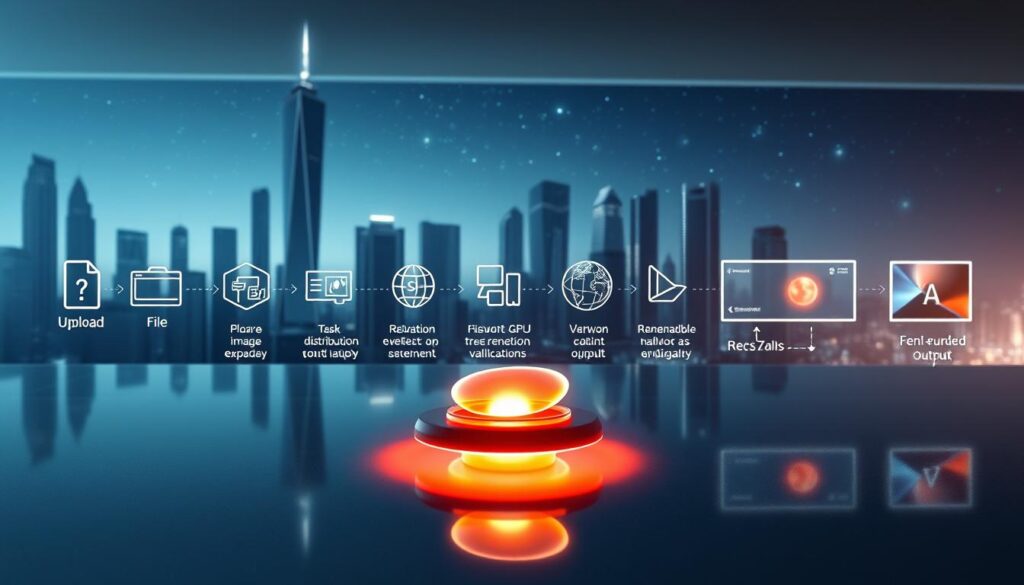
Cost estimates and escrow
OctaneBench scores produce an upfront cost estimate tied to objective performance metrics. That aligns budgets to expected throughput before any work begins.
When a job is submitted, tokens are locked in escrow. This secures payment and gives node owners confidence the funds exist.
Execution, previews, and verification
As frames process, creators can view real‑time previews and frame progress to catch issues early. Live monitoring reduces rework and speeds delivery.
The system uses proof‑of‑render to verify completed frames before releasing payments. Verified milestones make results auditable and link payouts to delivered work.
- Scheduling: node selection balances throughput and reliability across the render network.
- Disputes: missing frames or quality flags trigger automated checks and penalties or slashing when needed.
- Automation: escrow releases rndr to operators on verified acceptance, eliminating manual invoicing.
| Stage | Purpose | Outcome |
|---|---|---|
| ORBX export | Package assets and settings | Consistent execution across gpu hosts |
| Cost estimate | OctaneBench score (OBh) | Clear budget expectations |
| Escrow & execute | Lock tokens, run tasks | Funds secured; live previews |
| Verify & settle | Proof-of-render validation | Auditable results; payouts released |
In short: this pipeline standardizes handoffs, lowers friction, and creates transparent milestones that build trust for creators and node operators alike. For broader context and industry coverage see a recent report on the network.
Render token RNDR GPU rendering blockchain platform
Trust, matching, and on‑chain settlement work together to keep high‑value jobs on schedule and verifiable.
Core components: network, GPU owners, creators, and tokens
The architecture is a permissioned network that links creators who submit ORBX jobs with gpu owners who supply compute power.
Tokens route value through escrowed accounts so payments wait until work passes verification. Job brokers match workload needs to hardware tiers and operator reputation.
The system assigns frames based on hardware capability, deadline, and cost. This keeps complex jobs aligned with the right owners and hardware.
Trust mechanisms: proof-of-render validation and transparent settlement
Proof‑of‑render verifies outputs at the frame level before escrow releases funds. This discourages partial or low‑quality delivery.
On‑chain settlement creates traceable records: escrow, release conditions, and dispute outcomes are auditable.
Staking and reputation further align incentives. Misconduct can trigger penalties while reliable owners gain priority and higher pay.
- Permissioned nodes enforce eligibility and uptime standards.
- Transparent metrics let creators evaluate past work and choose reliable partners.
- Creators get predictable, usage‑based billing; owners monetize idle hardware.
RNDR tokenomics explained: pricing, BME model, and incentives
This section breaks down how value flows through the network, from fiat pricing to on‑chain settlement and incentives.
USD‑pegged pricing with RNDR settlement and credits
Creators pay in stable USD amounts so costs are predictable for budgeting. Behind the scenes, the system converts those fiat prices into an on‑chain currency for settlement.
Credits let teams buy access by card while keeping token flows intact. Cards simplify checkout; the ledger still records escrow, verification, and final payouts in rndr.
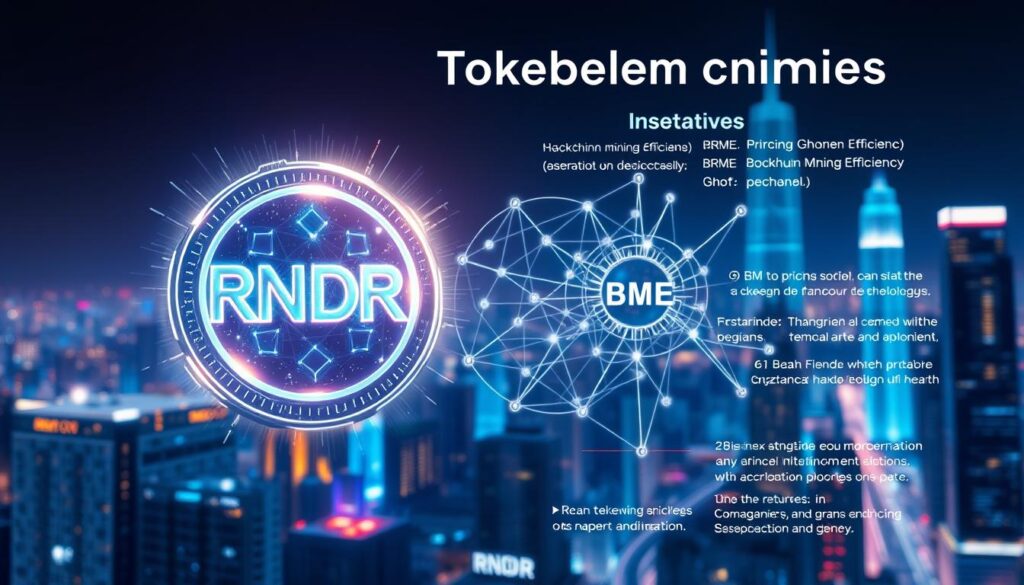
Burn-and-Mint Equilibrium aligns supply with demand
The Burn‑and‑Mint Equilibrium (BME) burns rn dr at job submission to reflect immediate usage. Then the network mints new rndr at epoch end to reward validated work.
For example, one December 2023 epoch distributed about 43,758 rndr to node operators. A community‑approved inflation pool of ~107M raises max supply from ~537M to ~644M, released only as demand justifies.
Staking, reputation, and slashing for quality assurance
Operators stake tokens and build a reputation score to access higher‑value jobs. Slashing penalizes poor service, which protects creators and keeps the system reliable.
Outcome: rewards tie to verified output, epochs and escrow make flows auditable, and incentives align across creators, providers, and the foundation.
Getting started on Render Network: creators and GPU providers
A smooth onboarding path helps creators and node operators get productive fast.

For creators
Creators need an active OctaneRender license to access the Creator Portal. Export projects as ORBX so assets and settings travel intact.
In the portal, configure a job by setting resolution, samples, and a service tier that matches deadlines and budgets. Monitor progress with real-time previews and intervene early if adjustments are needed.
Retrieval is simple: once frames pass verification you can download final assets for delivery or client review.
For node operators
Owners join the onboarding queue by submitting an interest form. Selected candidates receive step-by-step setup guidance and securely connect gpus to the network.
Maintain hardware health, stable connectivity, and uptime targets to boost reputation. Higher staking and consistent delivery unlock access to higher-value jobs.
- Best practices: routine maintenance, firmware updates, and monitoring.
- Dashboards: view completed tasks, pending payouts, slashing events, and reputation metrics.
- Support: community forums and troubleshooting docs help tune performance and choose tiers.
| Role | First Step | Key Benefit |
|---|---|---|
| Creators | Obtain OctaneRender license; export ORBX | Consistent jobs; faster delivery |
| Node operators | Submit interest form; follow setup guide | Earn rewards after verified completion |
| Both | Use dashboards | Transparent progress, payouts, and reputation |
Access to services is usage-based, lowering capital strain for creators while creating steady revenue for owners of capable hardware. Joining aligns incentives: faster iteration for creators and reliable rewards for node operators.
Security, quality, and reliability across a permissioned node network
Strong identity checks and location rules keep the system secure and fast for time‑sensitive jobs. A brief onboarding step verifies hardware specs, uptime history, and geographic location before a node joins the network.
Eligibility checks, geographic diversity, and uptime standards
Providers undergo hardware validation and stability tests. Verified gpu specs and connectivity are required to accept production work.
Geographic diversity improves latency and resilience by routing tasks to nodes near users or to regions that avoid local outages.
Continuous monitoring enforces uptime thresholds. Nodes that drop below standards risk reduced assignment and reputation loss.
Dispute resolution, penalties, and verified frame delivery
Proof‑of‑render validates each frame before any payouts release. This preserves job integrity from upload to final asset delivery.
- Staking: operators lock rndr as economic collateral to align incentives and deter bad behavior.
- Disputes: missing frames, artifacts, or delays trigger automated checks and human review when needed.
- Penalties: confirmed faults can lead to slashing, restitution, or lowered priority for future tasks.
Blockchain‑backed audit trails log submission, verification, and settlement steps so creators can trace outcomes. Together, these safeguards protect both creators and operators, reduce rework, and keep the market reliable and open to honest participants.
Adoption, ecosystem growth, and the pay‑as‑you‑render advantage
Measured traction shows the model is moving fast from pilots to production. The render network has processed more than 35 million frames and counts over 1,900 active nodes as of early 2024.
Network traction: frames rendered and active nodes
Those numbers indicate production-grade scale and reliability. High volume supports commercial jobs, short deadlines, and burst demand without long contracts.
Use cases and partners across media, AI, and immersive platforms
Studios used the service for Westworld-level VFX. Teams also run NFT pipelines, indie games, and large AI visualization tasks. Strategic collaborations with Apple, OTOY, and metaverse partners expand integration and reach.
Predictable costs, flexible scaling, and access for all creators
The pay-as-you-render model means creators pay only for completed frames. Prices are quoted in USD and auto-converted to rndr for settlement, so budgets stay predictable.
Outcome: independent artists and small studios gain access to big-studio compute and gpus. Owners of capable rigs add capacity and earn tokens while the ecosystem grows.
Where Render Network is headed next for creators and GPU owners
Future work focuses on deeper AI workflow support, faster epoch cadences, and smarter scheduling to match complex jobs with available computing power.
The ecosystem will expand integrations and incentives so providers and partners can onboard smoothly. Governance evolves through RNPs and a DAO transition, giving holders more say over protocol parameters and investment choices.
A 1.14M rndr pool helps attract strategic compute partners like io.net during Solana-related efforts. Operator tools—dashboards, leaderboards, and staking tiers—boost uptime and throughput for owners and gpu operators.
Creators get richer scene profiling, better previews, and automated retry logic to cut manual fixes. Compliance, auditability, and deterministic settlement on the blockchain make the approach enterprise-ready while a sustainability-minded model ties emissions to actual use.
In short: a more open, scalable render network will let creators and gpu owners collaborate at scale, powered by rndr and guided by the community for long-term innovation.


